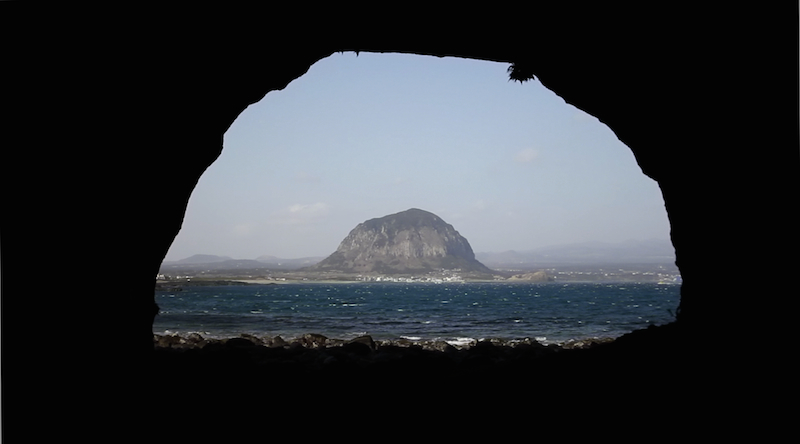
Jane Jin Kaisen. Still from Reiterations of Dissent, 2011. Five-channel video installation. RT 8: 57 min to 10.02 min. Courtesy the artist.
Jane Jin Kaisen’s elegiac, five-channel video installation, Reiterations of Dissent, was recently showcased at the Sonoma County Museum in Santa Rosa, CA as a part of the collective exhibit, Camellia Has Fallen: Contemporary Korean Artists Reflect on the Jeju Uprising. Composed of five, looped videos—Ghosts, Lamentation of the Dead, Jeju Airport Massacre, Politics of Naming, and History of Endless Rebellion—the video installation explores the Korean peninsula’s entangled geopolitics, one that is largely underlined by a relationship of “militarized debt” between the U.S. and South Korea. Reiterations of Dissent recalibrates the atrocities of “4.3”—a 1948, U.S.-sanctioned massacre that resulted in the deaths of an estimated 30,000 Jeju residents, many who were targeted as communists—and its lingering memories that haunt residents of Jejudo (an island off of the southern coast of the Korean peninsula) today.
As a medium, multi-channel video installations have the ability to produce a rich, heterotopic space of multiple temporalities, which is critical to the stakes brought forth by Reiterations of Dissent: primarily, the destabilization of mainstream narratives related to the Korean War—of heroism and healing; democracy/freedom versus communism; neoliberalism versus totalitarianism. Kaisen’s video installation is a powerful reminder of the ways that the best art troubles and confronts seemingly given truths, as Reiterations of Dissent presents a silenced and devastating archive of experiences, events, and obligatory costs.



